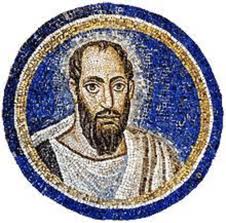

Now let us look at our second word, Adoption.
The Greek word is not found in classical authors at all. It has been thought that Paul invented it to represent theologically the very close special relation of God to the convert. The word is used in Romans, Chapter 9, 4th verse, where he speaks of Israel as having the "adoption"; and so Liddell & Scott define the word as "That relationship which God was pleased to establish between himself and Israel in preference to all other nations." But the word has no such special origin. It is the technical law term for the adoption of a son. While it is not found in classical authors, it is not peculiar to Paul, because it is found very often in inscriptions on monuments to indicate legal adoption.
It is not hard to see Paul's meaning. He was not entirely satisfied with his metaphor of the freed slave of sin becoming the slave of God. He said he was speaking in human fashion when he said that. But the new relationship was something different to him. To be sure, in antiquity, the slave when liberated became the slave of the god: but that was not the case with Paul's God. When He freed from slavery to sin the individual was adopted by Him as His son; he did not become His slave.
Romans, 8:14:
"For as many as are led by the spirit of God are children of God. For after your conversion you received not the spirit of slavery again—"
Note the use of the word "again." It is not just a new slavery that you are taking on, but
"you received the spirit of adoption, whereby we cry, Abba, Father."
In verse twenty-three he speaks of those who have the first fruits of the spirit as waiting for the adoption, namely, the emancipation or redemption of the flesh. In other words there is not any question which comes first, adoption or redemption. They are one and the same thing in different aspects. Adoption is simply Paul's erratum on his metaphor of the freed slave. There is no use trying to find the subtle, theological distinction between redemption and adoption,—that is, if we are going to stay within the thought of Paul. They are simply the two pictures of the freed slave and the adopted son. But what a light those pictures throw on what must have been Paul's experience!